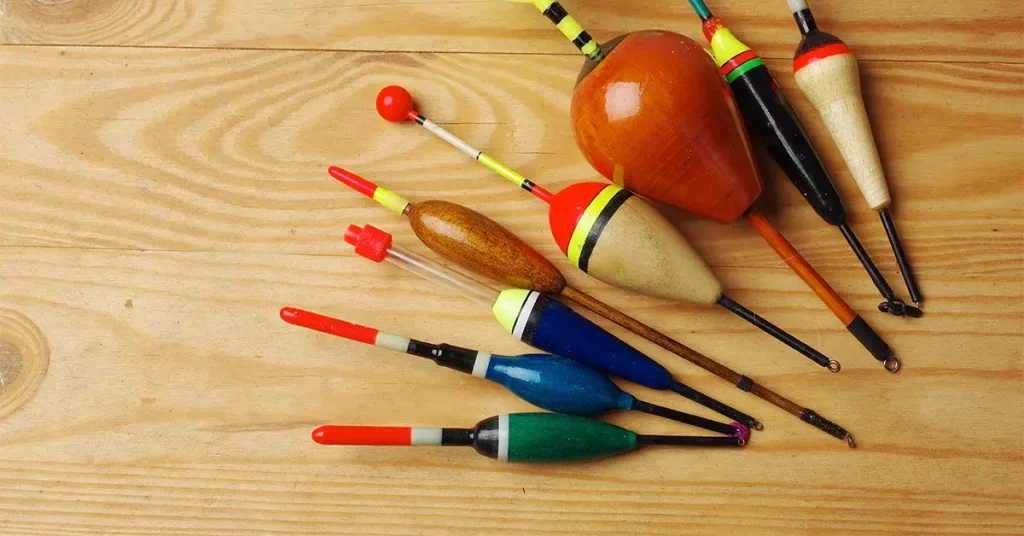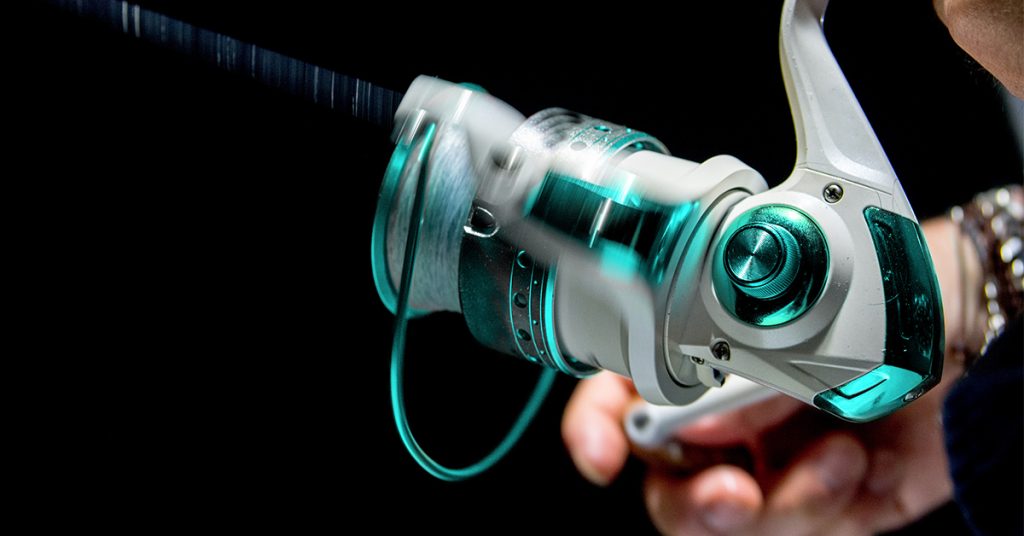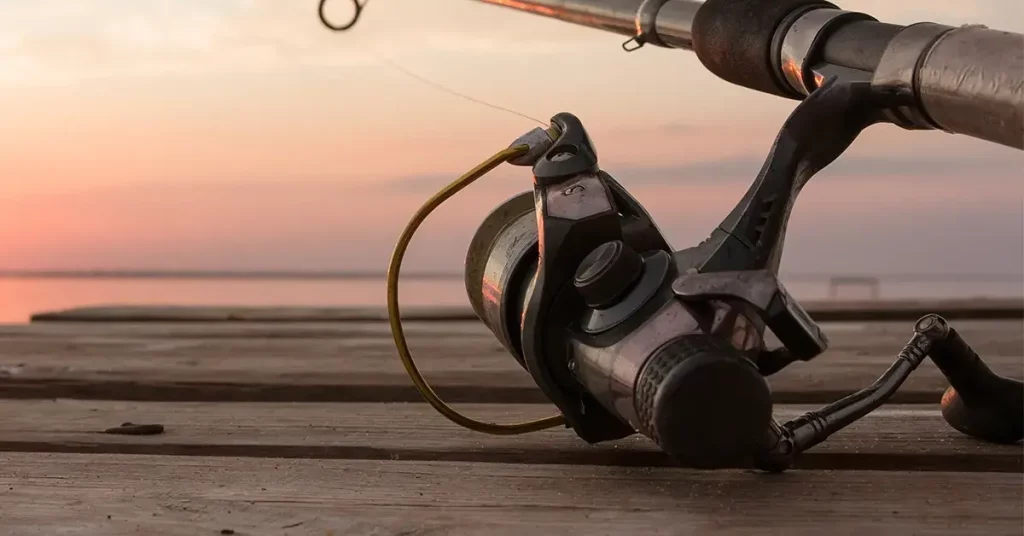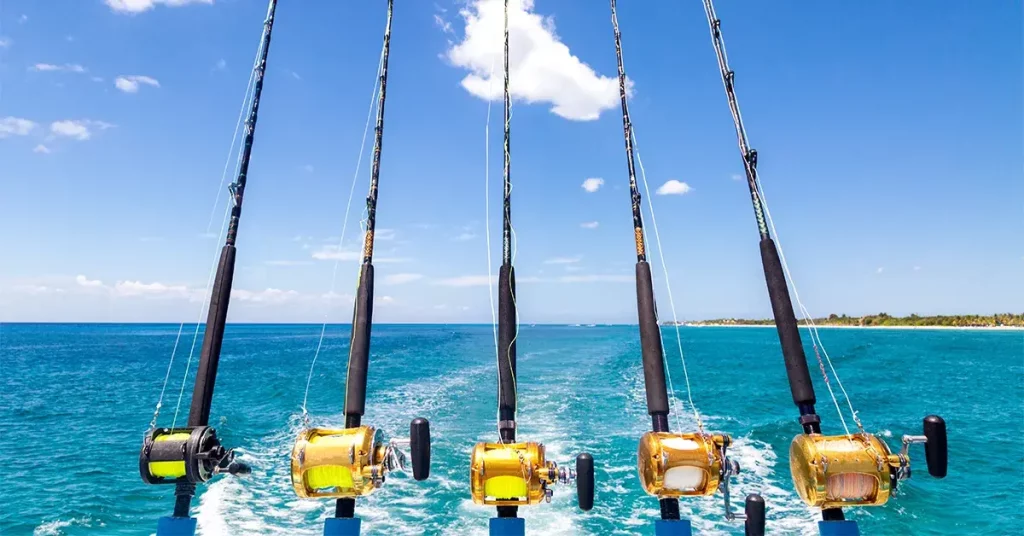Call them bobbers; call them floats, either way, there’s something deeply satisfying about fishing with a bobber or float! The simplicity of rigging a float, dropping your bait in the water, and waiting with bated breath for those subtle bobs indicating a fish is nibbling on your bait – is both mesmerizing and addictive.
Many of us got our first taste of fishing with a basic cane pole, a worm, and a round bobber. While this is certainly a viable fishing method, fishing with bobbers or floats can be far more effective.
Take a look in any experienced angler’s tackle box and you’ll find a wide variety of bobber types and sizes.
In this post I’ll break down several different bobber types, how and when to use them, and how to rig them properly.
Bobber & Float Fishing Benefits
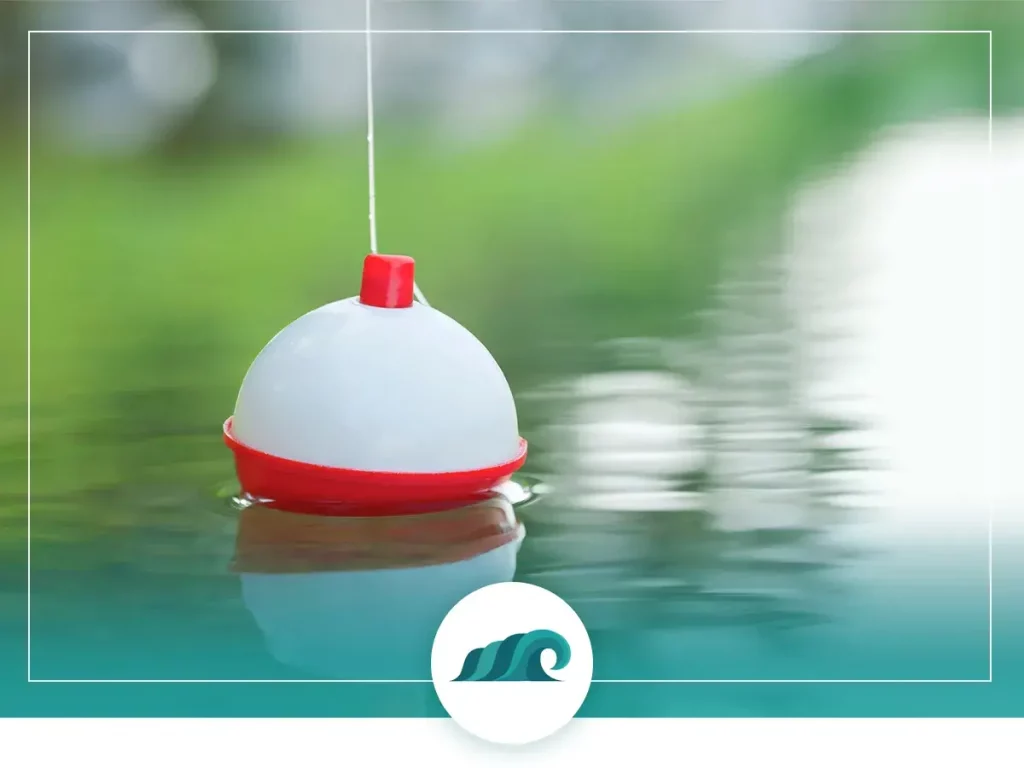
Bobbers are highly versatile pieces of fishing gear. They offer a number of advantages beyond simply floating your bait:
1) Fishing with a bobber allows you to suspend your bait above the bottom at the exact depth you want. This is especially useful when you’re targeting fish that tend to suspend in schools – like crappie, bluegill, and perch.
2) The bottom of a lake, river, or stream is generally the easiest place for your bait to get snagged up. Branches, debris, reeds, and other vegetation are all common near the bottom, so keeping your bait suspended above the bottom will greatly reduce annoying snags.
3) Floats can be used to drift a baited hook through current into areas that would difficult or impossible to access without a float.
4) Bobbers increase your bait’s visibility which improves your strike detection ability significantly. Even the tiniest movement is easy to spot on the surface, which makes bobbers especially useful when targeting fish with subtle bites.
While floats clearly have many advantages, standard round bobbers have several drawbacks that can make them frustrating to work with.
Conventional Bobber Drawbacks
Firstly, the depth at which they can be set is limited by the rod’s length – anything longer than that can make casting with any degree of accuracy difficult. If you’re fishing in water deeper than a few feet, then fishing with one of these floats will often result in lost fish and frustration.
Secondly, because the bobber is fixed to your line, the attachment point will limit the amount of line you can reel in. If you set up the bobber several feet up your main line, then controlling and landing a large fish can become difficult.
Lastly, direct attachment can cause damage to the fishing line. If the line gets kinked at that point, then it can deteriorate and break down over time.
Luckily, there are other float types besides conventional fixed bobbers. Slip bobbers solve all of these issues, offering greater versatility and performance than fixed floats.
Types of Floats
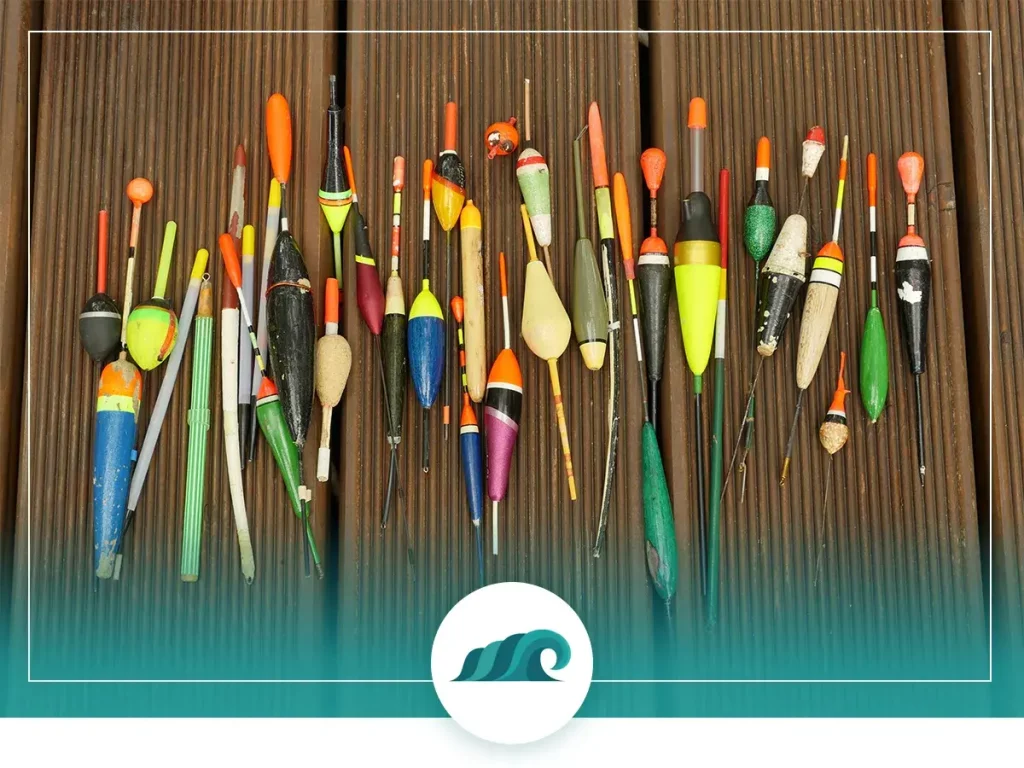
We’re all familiar with those little red and white plastic globe bobbers with spring-loaded attachments. While these work fairly well, bobbers come in many shapes and sizes, from hand-crafted balsa wood slip bobbers, to clear plastic bubble floats.
Let’s take a look at several float types and their uses:
Round Fixed Bobbers
These are probably the most popular type of bobbers out there. They’re cheap, easy to use, and feature a straightforward design that anyone can rig with ease.
The attachment point is typically one or more recessed hooks built into the top/bottom of the bobber. Some have an external notch and spring that can be fixed to the line by retracting the spring and sliding the line through the built-in notch.
It’s important to match the bobber size to the fish and tackle size you’re targeting. The most common mistake when using this type of bobber is picking one that’s too big for your bait. An oversized bobber will result in too much resistance and cause fish to spit out your bait before you have a chance to set the hook.
This style of fixed bobber works well for crappie, bluegill, and other panfish. They’re also effective when you’re targeting bass with live bait. Keep in mind that when you rig a fixed bobber several feet above your baited hook, normal casting can be difficult – so you may need to use a ‘lob cast’ to get your bait where you want it.
Slip Bobbers
As mentioned previously, slip bobbers solve many of the problems with fishing conventional fixed bobbers.
As the name implies, they can slide (or slip) up and down your line freely. The built-in central channel allows you to thread your line through the bobber’s body, so it slides freely from your terminal tackle up to a stop knot or line stop tied further up the line.
This makes casting a breeze and allows you to rig your bait at any depth you desire without being limited on how you can cast. These bobbers also don’t cause damage to fishing line like some fixed bobbers can. You can also reel a slip bobber right up to the terminal tackle, which makes landing larger fish much easier.
As they’re able to slide up and down your line freely, they require a slightly more complex setup than fixed bobbers. You’ll need a couple of beads, as well as a rubber or cloth bobber stopper to set the depth you want to fish at. This setup allows you to adjust your depth on the fly, which is useful when you don’t know exactly what depth the fish are at.
Many slip bobbers are made from Balsa wood, which makes them a bit pricier than other floats. Plastic and foam slip bobbers are also available though.
Spring Slip Bobbers
Spring slip bobbers (also called spring floats) are a newer innovation that combines the convenience of a slip bobber with the ease of use of a fixed bobber. They have two modes: sliding mode, and fixed mode.
When in sliding mode, the bobber will slide freely up and down your line in a similar fashion to a traditional slip bobber. The attachment point is a small notch built into the bobber stem. This mode is great for fishing in deeper water.
When in fixed mode, the bobber will act just like a conventional fixed bobber. This makes it great for fishing in shallow depths. To fix the bobber in position, simply pull back the spring, wrap your line once around the bobber stem, and then release the spring to lock the bobber in place.
These floats are highly versatile, as they give you the flexibility to suspend your bait anywhere from 2 feet down to 20+ feet with ease.
Cigar Floats
As the name implies, cigar floats are cigar-shaped bobbers that float vertically in the water – greatly increasing their visibility.
They typically have a weighted end and an unweighted end, which works to keep them upright in the water – no matter how choppy it gets.
Cigar floats attach to your line with the same clip-on attachment method as round fixed bobbers do.
These bobbers are great for fishing with the larger baits and lures needed for targeting bigger fish.
Bubble Floats
Bubble floats are another versatile tool that many anglers like to have in their arsenal. They feature hollow plastic bodies that can be filled either fully or partially with water – allowing you to get just the right casting weight. When a fish takes your bait, the water inside will rush to the fat end of the float, causing it to pop up on the surface.
The versatile design can be used as either a slip bobber or a fixed bobber. To use it as a fixed bobber, simply twist the rubber tubing on the end several times until the bobber is fixed in place. This twist-on design is a real bonus, as it won’t damage your line like other fixed bobbers do.
These bobbers are popular for casting flies on a spinning rod, but can also be used when you’re fishing with bait, jigs, and other methods. Check out the Rainbow Plastics A-Just-A-Bubble for one of the best bubble floats on the market.
Bobber Fishing Methods
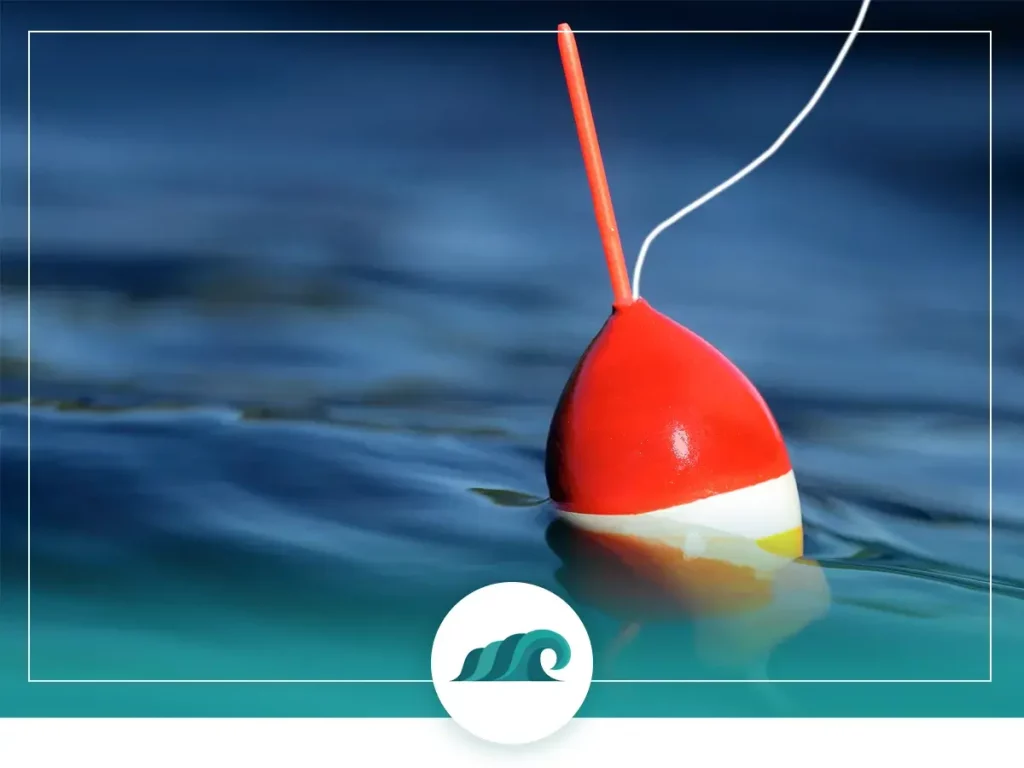
Bobbers can be highly effective for a variety of fish species, but each will require slightly different rigging and fishing techniques. Let’s break down some of the most popular species and how to catch them.
Crappie & Bluegill
Both slip bobbers and small fixed bobbers work well for catching panfish like crappie and bluegill.
Slip bobbers are great for quickly finding the correct depth where the crappie or bluegill are at. Because you can adjust the float depth by sliding the bobber stop in mere seconds, you can stay on the fish as they move around.
A small fixed bobber paired with a jig and minnow is one of the best ways to get these fish to bite when they’re in shallower open water.
Trout
A slip bobber paired up with a spinning rod is one of the deadliest methods of catching trout in moving water. Slip bobbers work better than fixed bobbers for this type of fishing, as your bait depth can easily be changed on the fly.
Many anglers like to use a bubble float when targeting trout with a spinning rod, as the fish won’t feel the weight of the float when it takes your bait. Trout will hit a wide variety of baits, including nightcrawlers, crickets, and minnows as well as flies and jigs.
Salmon & Steelhead
Bobber fishing for salmon and steelhead is one of the simplest and most effective methods to catch these prized fish. The precision of casting with a slip float allows you to hit small pockets effectively, and fish further upstream than would normally be possible.
As with any slip floats, you’re able to adjust the depth of your bait in the water. This is particularly useful when you’re fishing in shallower rivers and streams, as it helps you keep your bait off the bottom where it can get tangled up in vegetation and debris.
Bass
A classic round bobber works well when fishing for bass with shiners and other baitfish. This is especially true in shallower water around 5 or 6 feet deep. A round bobber allows you to suspend your bait directly in front of the bass, which presents an irresistible target for these fish.
It’s important to make sure you match the bobber size to the size of your bait and hook. If you use a float that’s too large, the fish will encounter too much resistance and will release your bait rather than swallowing it.
With this setup, you don’t need any type of retrieve. Simply use a lob cast to get your bait where you want it, and then wait for the bass to bite. As long as your baitfish are fresh and lively, you should be catching bass in no time.
If you’re fishing in deeper water, then a slip bobber setup will work well. This allows you to get your bait down deep while still being able to cast effectively.
How to Rig a Bobber
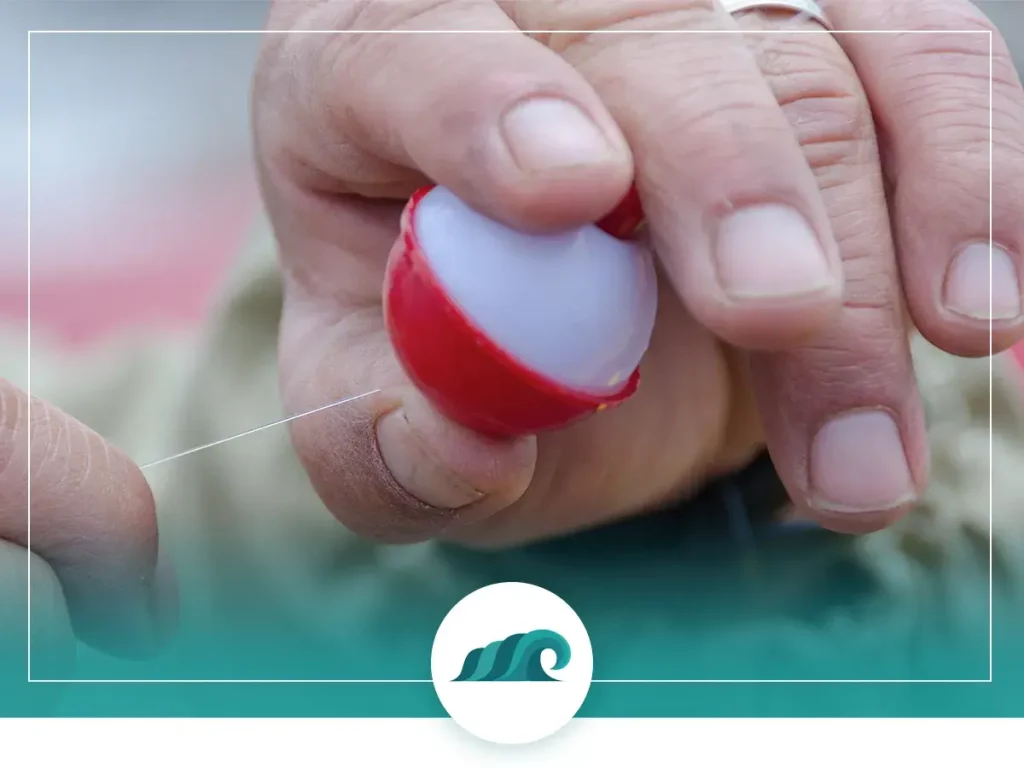
Rigging a bobber or float is fairly straightforward, but you’ll need the right gear to ensure you do it properly. Let’s take a look at how to rig the most common float setups.
Rigging a Round Bobber
Fixed round bobbers rigs are pretty easy to setup. All you need is your fishing line, a fixed round bobber, hook, bait, and split shot.
Here’s how to set it up:
- Figure out the depth you want to suspend your bait at, and then pull that much line from your rod tip.
- Attach the bobber to the line by threading the line through both the top and bottom attachment hooks. To expose the hooks on either side, depress the plastic button that raises and lowers the metal hooks.
- Now the bobber is anchored in two places, ensuring it’s secure and can’t come loose.
- Tie your hook to the end of the line, crimp the split shot above the hook, and get ready to catch some fish!
Rigging a Slip Bobber
Rigging a slip bobber is a little more complicated than setting up a conventional fixed bobber. You’ll need a few extra supplies to ensure everything is working optimally.
Supplies Needed:
- Slip bobber: Any type of slip bobber will work; make sure to match the float size to the fish you’re targeting.
- Bobber stops: There are several different common bobber stop types: sliding rubber stops, bead stops, and traditional tie-on “sting” stoppers. All work well, but I’d recommend sliding rubber stops for their ability to quickly adjust the stopper depth.
- Beads: Beads act as a buffer between your bobber and bobber stop (and swivel). They prevent damage to the bobber and bobber stop.
- Barrel swivel & Leader (optional): These are optional, but definitely recommended. They attach to your main line, preventing line twists and making re-rigging easier.
- Sinker: Any kind of sinker can be used, split shot works well in most situations.
How to setup a slip bobber rig:
- Slide (or tie) your bobber stopper to your main line at the depth you want your bobber to stop at.
- Next, slide a bead up the line. Make sure its snug up to the bobber stopper.
- Slide the slip bobber onto the line followed by another bead. Make sure the beads are big enough to stop the slip bobber effectively.
- Tie your barrel swivel to the end of the main line.
- Attach your leader, fasten your hook, and attach enough split shot to keep the float mostly submerged, with just the tip exposed above the surface.
- That’s it – now you’re ready to go catch some fish!

